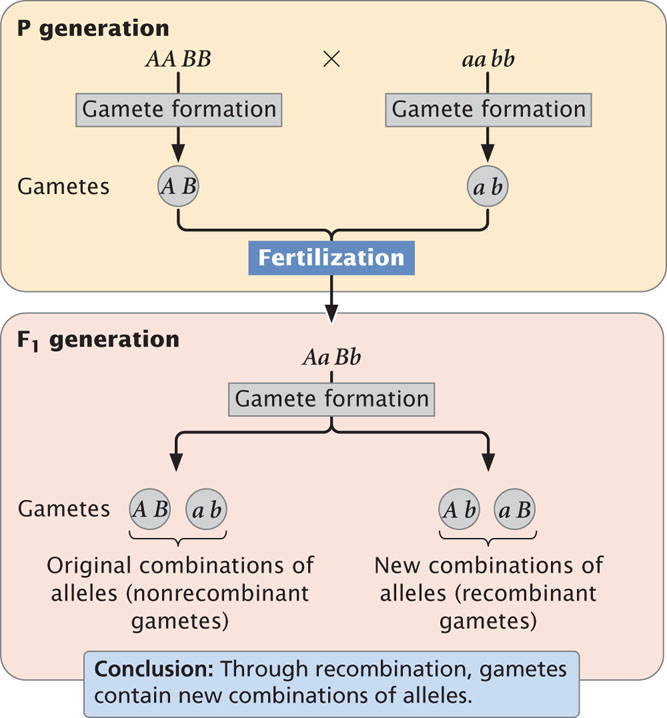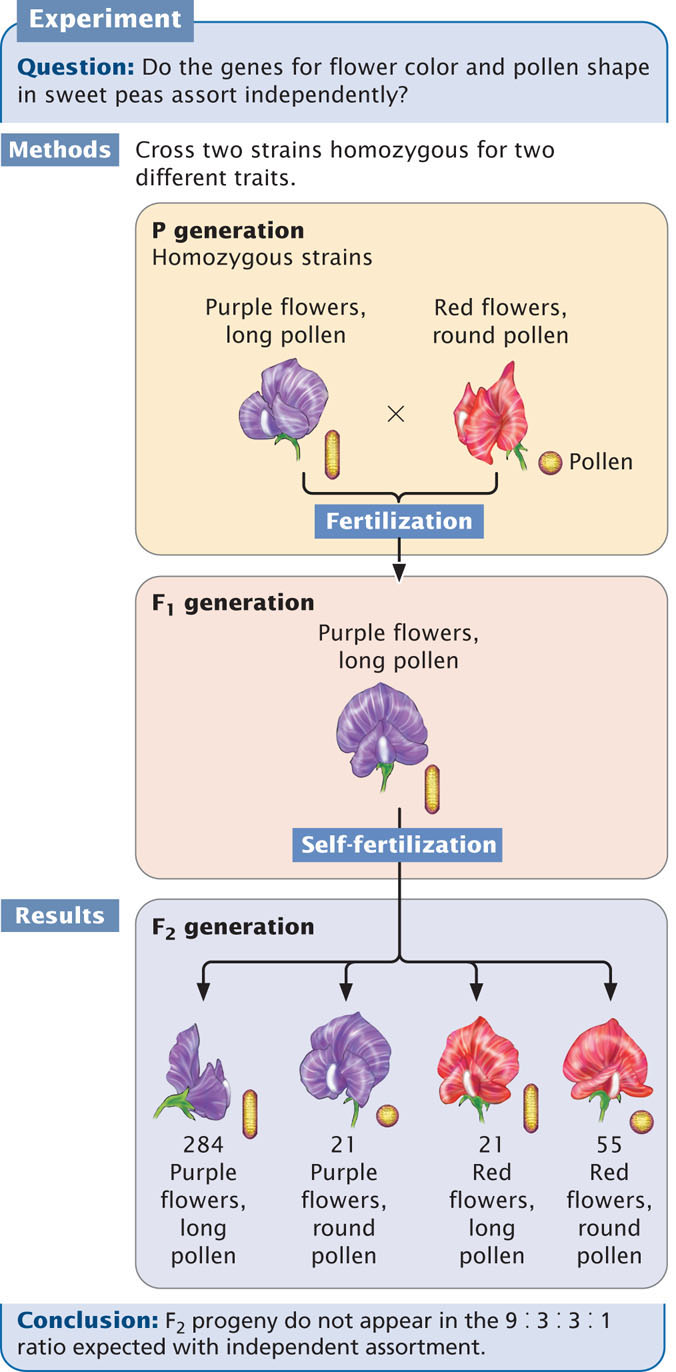7.1 Linked Genes Do Not Assort Independently
Chapter 3 introduced Mendel’s principles of segregation and independent assortment. Let’s take a moment to review these two important concepts. The principle of segregation states that each diploid organism possesses two alleles at a locus that separate in meiosis, with one allele going into each gamete. The principle of independent assortment provides additional information about the process of segregation: it tells us that, in the process of separation, the two alleles at a locus act independently of alleles at other loci.
The independent separation of alleles results in recombination, the sorting of alleles into new combinations. Consider a cross between individuals homozygous for two different pairs of alleles: AA BB × aa bb. The first parent, AA BB, produces gametes with the alleles A B, and the second parent, aa bb, produces gametes with the alleles a b, resulting in F1 progeny with genotype Aa Bb (Figure 7.1). Recombination means that, when one of the F1 progeny reproduces, the combination of alleles in its gametes may differ from the combinations in the gametes from its parents. In other words, the F1 may produce gametes with new combinations of alleles A b or a B in addition to parental gametes with A B or a b.

167
Mendel derived his principles of segregation and independent assortment by observing the progeny of genetic crosses, but he had no idea which biological processes produced these phenomena. In 1903, Walter Sutton proposed a biological basis for Mendel’s principles, called the chromosome theory of heredity, which holds that genes are found on chromosomes (see Chapter 3). Let’s restate Mendel’s two principles in relation to the chromosome theory of heredity. The principle of segregation states that a diploid organism possesses two alleles for a characteristic, each of which is located at the same position, or locus, on each of the two homologous chromosomes. These chromosomes segregate in meiosis, with each gamete receiving one homolog. The principle of independent assortment states that, in meiosis, each pair of homologous chromosomes assorts independently of other homologous pairs. With this new perspective, it is easy to see that the number of chromosomes in most organisms is limited and that there are certain to be more genes than chromosomes; so some genes must be present on the same chromosome and should not assort independently. Genes located close together on the same chromosome are called linked genes and belong to the same linkage group. Linked genes travel together in meiosis, eventually arriving at the same destination (the same gamete), and are not expected to assort independently.
All of the characteristics examined by Mendel in peas did display independent assortment and, after the rediscovery of Mendel’s work, the first genetic characteristics studied in other organisms also seemed to assort independently. How could genes be carried on a limited number of chromosomes and yet assort independently?
This apparent inconsistency between the principle of independent assortment and the chromosome theory of heredity soon disappeared as biologists began finding genetic characteristics that did not assort independently. One of the first cases was reported in sweet peas by William Bateson, Edith Rebecca Saunders, and Reginald C. Punnett in 1905. They crossed a homozygous strain of peas having purple flowers and long pollen grains with a homozygous strain having red flowers and round pollen grains. All the F1 had purple flowers and long pollen grains, indicating that purple was dominant over red and long was dominant over round. When they intercrossed the F1, the resulting F2 progeny did not appear in the 9 : 3 : 3 : 1 ratio expected with independent assortment (Figure 7.2). An excess of F2 plants had purple flowers and long pollen or red flowers and round pollen (the parental phenotypes). Although Bateson, Saunders, and Punnett were unable to explain these results, we now know that the two loci that they examined lie close together on the same chromosome and therefore do not assort independently.
